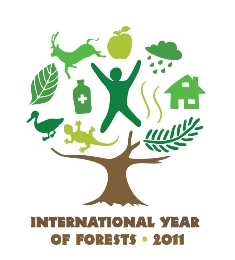 Geneva
GenevaWhat will European and North American forests look like in 2030? Will they store carbon, preserve biodiversity or help countries meet renewable energy commitments? Are trade-offs unavoidable?
A distinguished group of experts from governments, international organizations, NGOs and industry debated these issues in a panel on "Forests 2030: The future of forests in Europe and North America" chaired by Michael Zammit Cutajar, former Executive Secretary of the United Nations Framework Convention on Climate Change and under the patronage of H.E. Mr. Janusz Zaleski, Undersecretary of State, Ministry of Environment, Poland. Discussions focused on the key findings of three major reports: the State of Europe's Forests 2011 report; the European Forest Sector Outlook Study (2010-2030); and the North American Forest Sector Outlook Study (2006-2030).
The panel concluded that the potential for conflicts between policy options was too evident for policy makers to sit on the fence. Different choices will have to be made according to national (or regional) economic, social and environmental contexts. However, a strong optimism was emerging that innovation, driven by policy and economic incentives, could balance these demands. When considering options, policy makers should look at costs and benefits beyond the forest sector alone, remaining aware of the potential policy conflicts. In the same way that climate change has not been left exclusively to climatologists, it is clear that forest policy is too important to be left to foresters alone.
Participants were then invited to join a closing ceremony got the International Year of Forests organized by the Republic of Poland and the United States of America in cooperation with the ECE-FAO Forestry and Timber Section. Ambassador Betty E. King, Permanent Representative of the United States to the Office of the United Nations and Other International Organizations in Geneva, recalled that the International Year of Forests had, “delivered compelling examples from across the globe of national and international efforts to sustain and preserve forests.” “The International Year of Forests has served to successfully engage the global community on a topic that is vitally important to the sustainability of our planet.” she added.
In closing, delegations of Geneva-based Missions to the United Nations were invited to decorate the ‘United Nations tree’ - a symbol of multilateralism – by contributing decorations related to the cultural, economic, environmental and social importance of forests in their respective countries. As the tree was lit with LED lights, the Forestry and Timber Section passed the ‘baton’ of the International Year of Forests on to the UNECE Division for Sustainable Energy, who will be working intensively in 2012 to mark the International Year of Sustainable Energy for All and support the cause of energy accessibility and sustainability in the ECE region.
For more information on "Forests 2030: The future of forests in Europe and North America" and the closing ceremony, please check the UNECE website at: http://www.unece.org/iyf-closing.html
For further information please contact:
Paola Deda
Chief, UNECE/FAO Forestry and Timber Section
Email: [email protected]
Tel. +41 (0)22 917 2553

